1.
Analyse slope stability using piezometric lines with SLOPE/W
Use SLOPE/W to do a simple global stability analysis using a piezometric line to model pore-water pressures and the water surcharge load of a reservoir.
SEEP/W
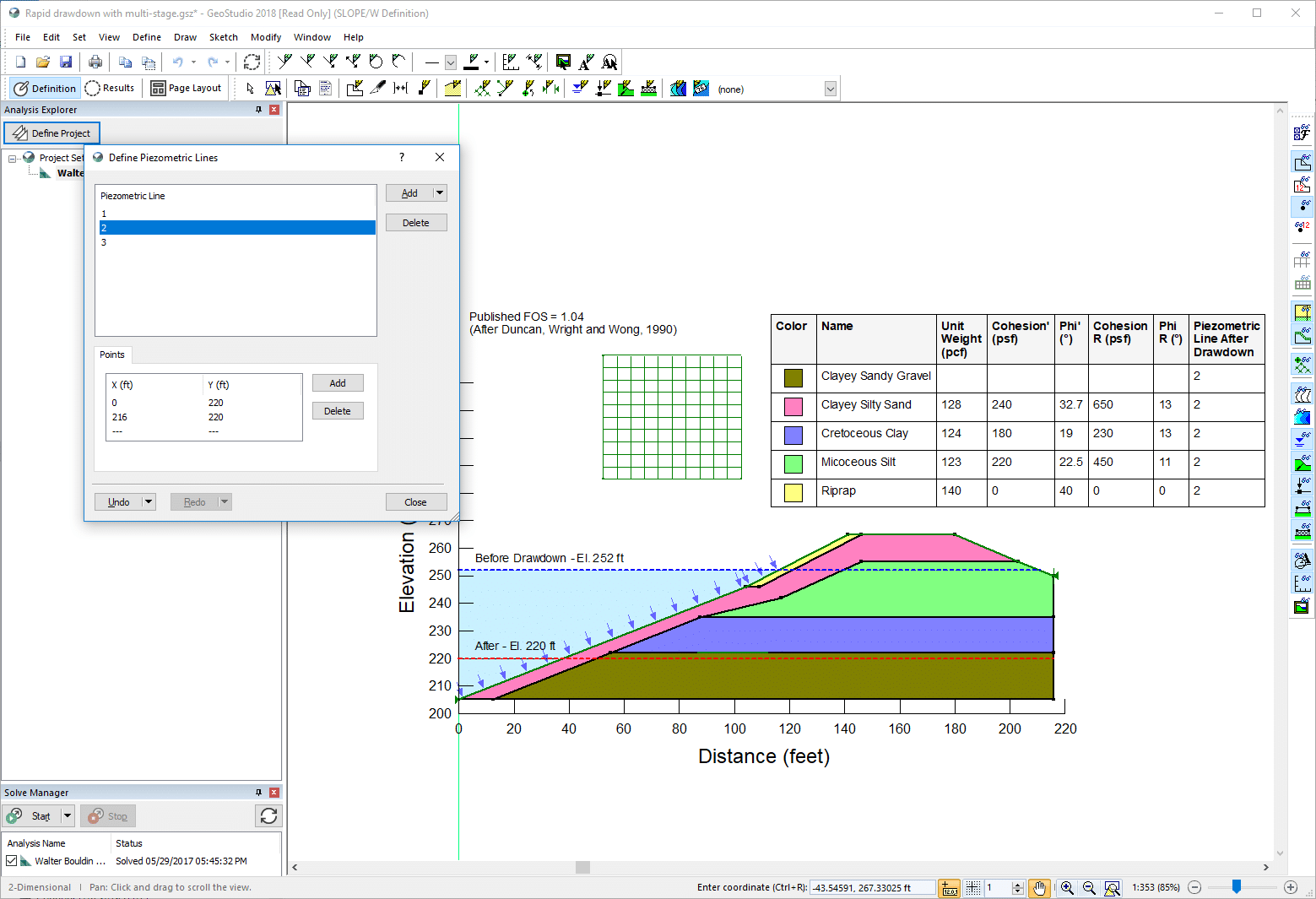
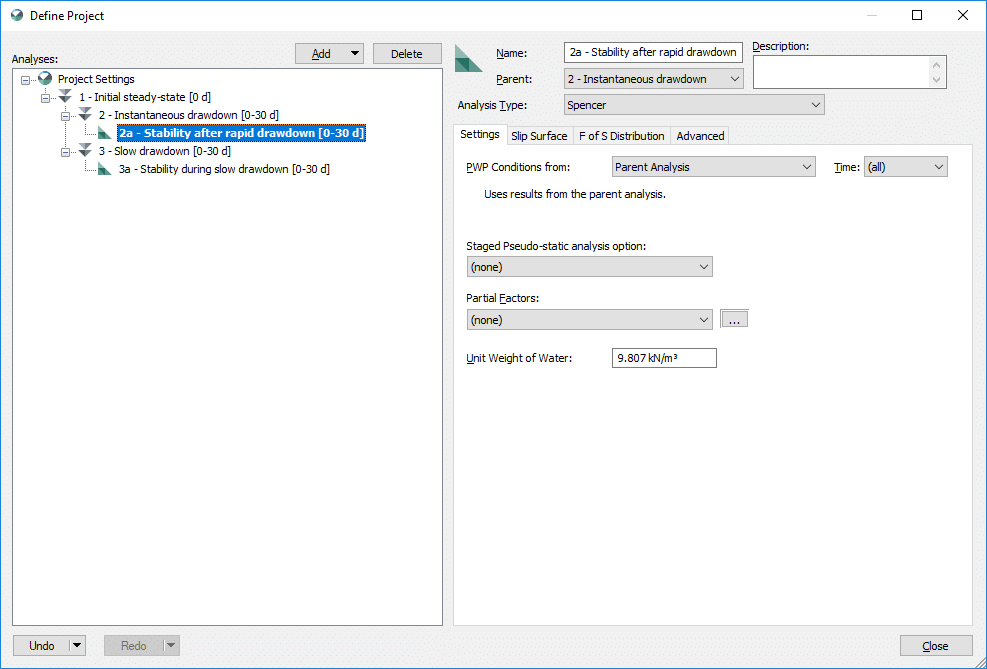
2.
Improve PWP definition with seepage analysis with SEEP/W
Use SEEP/W or SEEP3D to do a steady-state seepage analysis and use the pore-water pressures directly in the SLOPE/W stability analysis. This provides a more realistic understanding of the stability due to the PWP conditions.
SEEP/W
SLOPE/W
3.
Model external loads with stress-strain analysis using SIGMA/W
Use SIGMA/W to model load application or removal, and use these stresses directly in the SLOPE/W analysis, along with the finite element pore-water pressures, to determine the safety factor of the earth structure. Alternatively, use the strength reduction analysis capabilities in SIGMA/W to reduce the strength parameters until a global rupture zone forms, which indicates the failure mechanism and the safety factor.
SIGMA/W
SLOPE/W
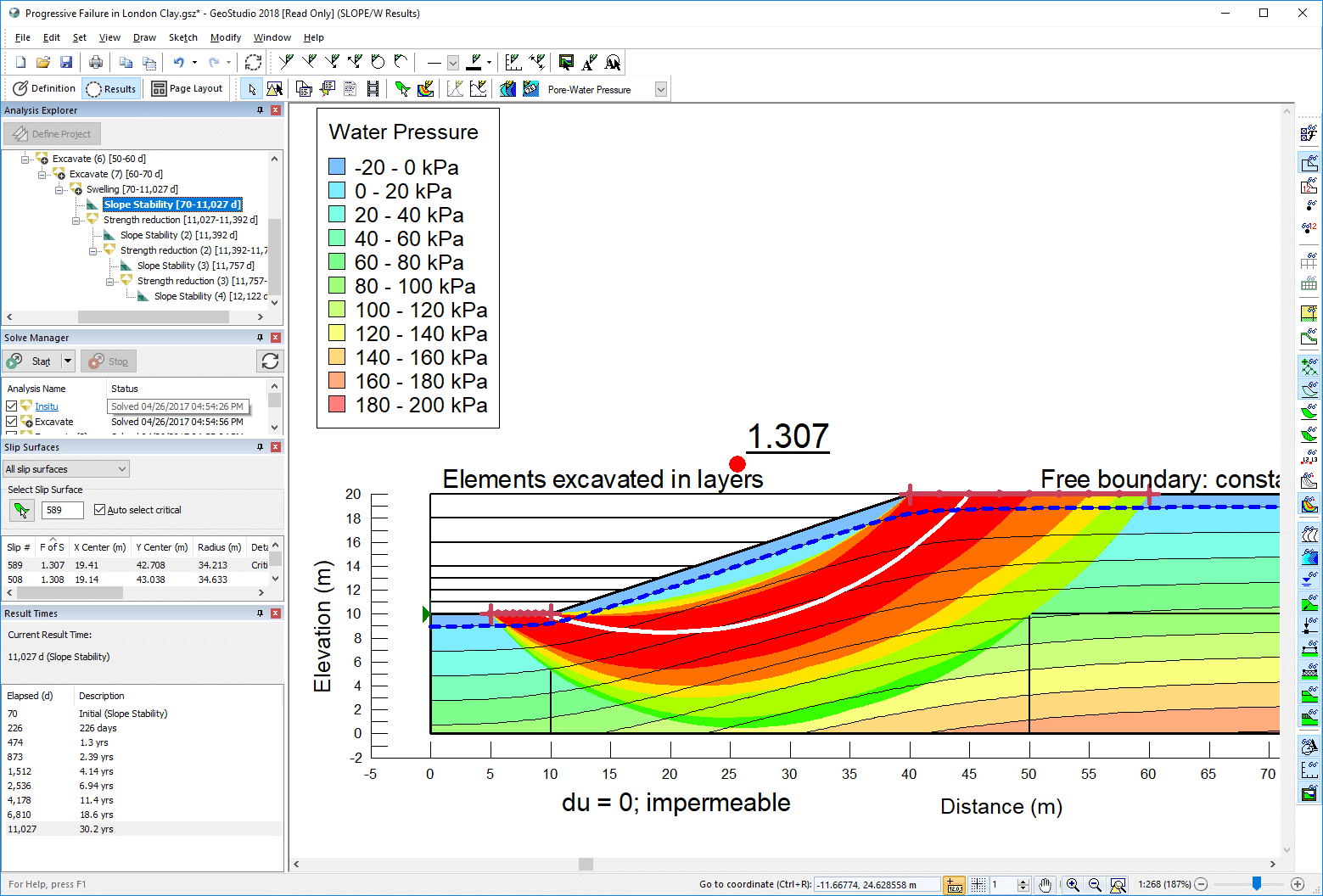
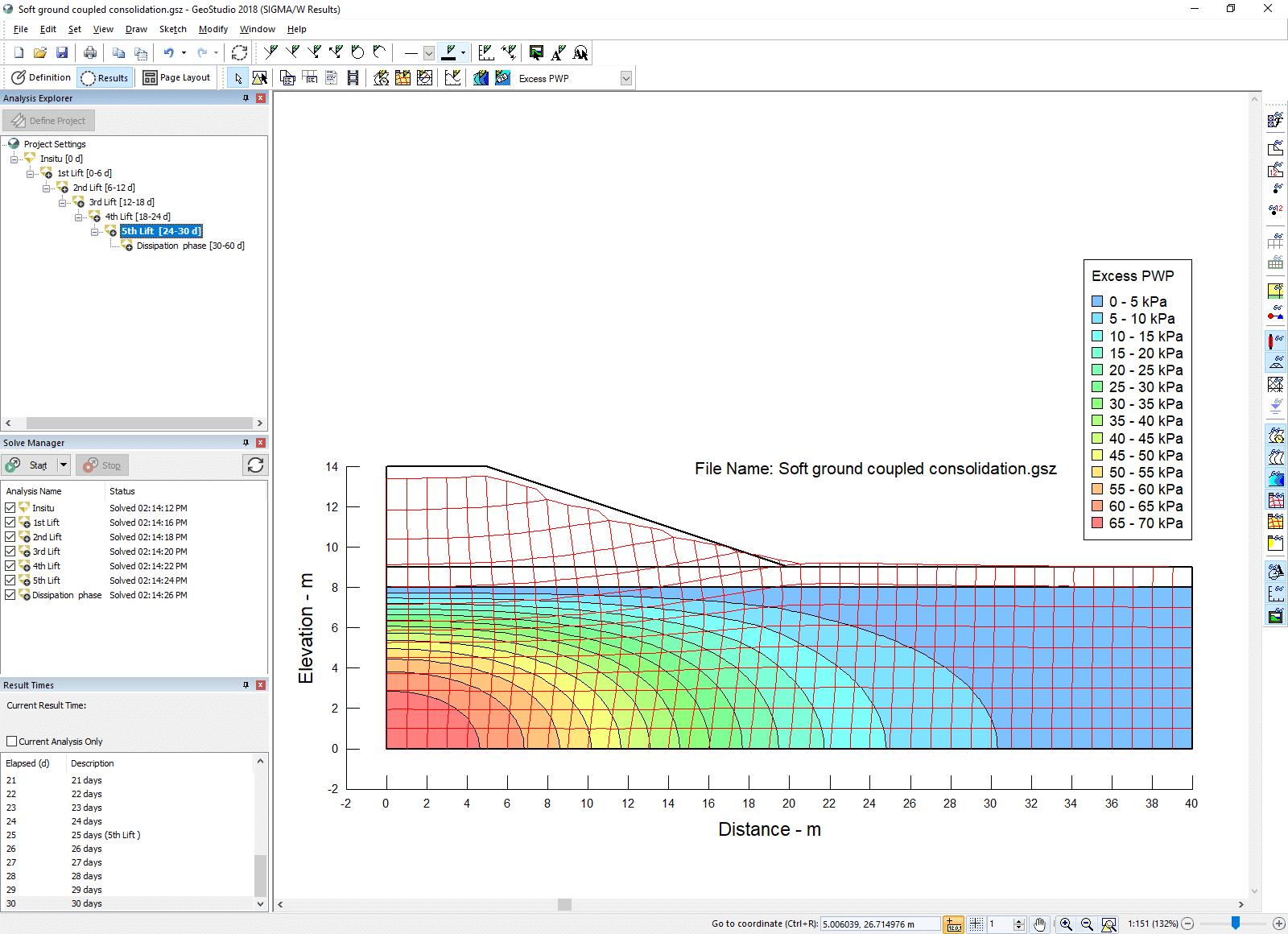
4.
See PWP & stress changes with consolidation analysis in SLOPE/W
Use a coupled stress and pore-water pressure analysis to simultaneously model the effect of loading on the pore-water pressures and stresses. Then use the computed stresses and pore-water pressures directly in a SLOPE/W analysis.
SLOPE/W
5.
Model effects of an earthquake with QUAKE/W
Use QUAKE/W to consider dynamic loading on the structure from an earthquake. QUAKE/W can begin with the initial stress and PWP profile that has already been computed by SIGMA/W and SEEP/W and then apply earthquake accelerations to model the resulting change in stress. A Newmark analysis can be conducted in SLOPE/W to determine the cumulative displacement along the critical slip surface.
Quake/W
SLOPE/W
SLOPE/W
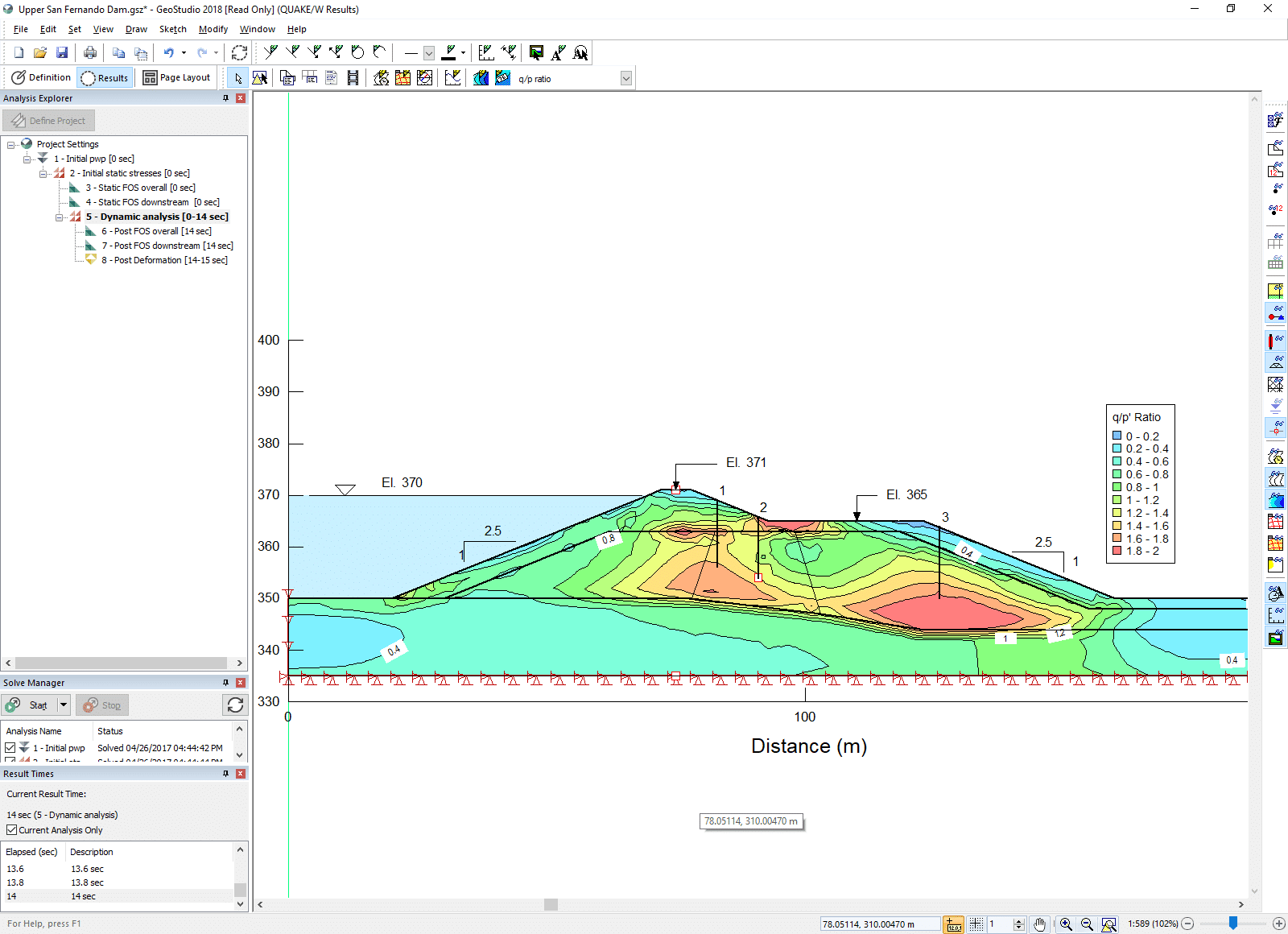
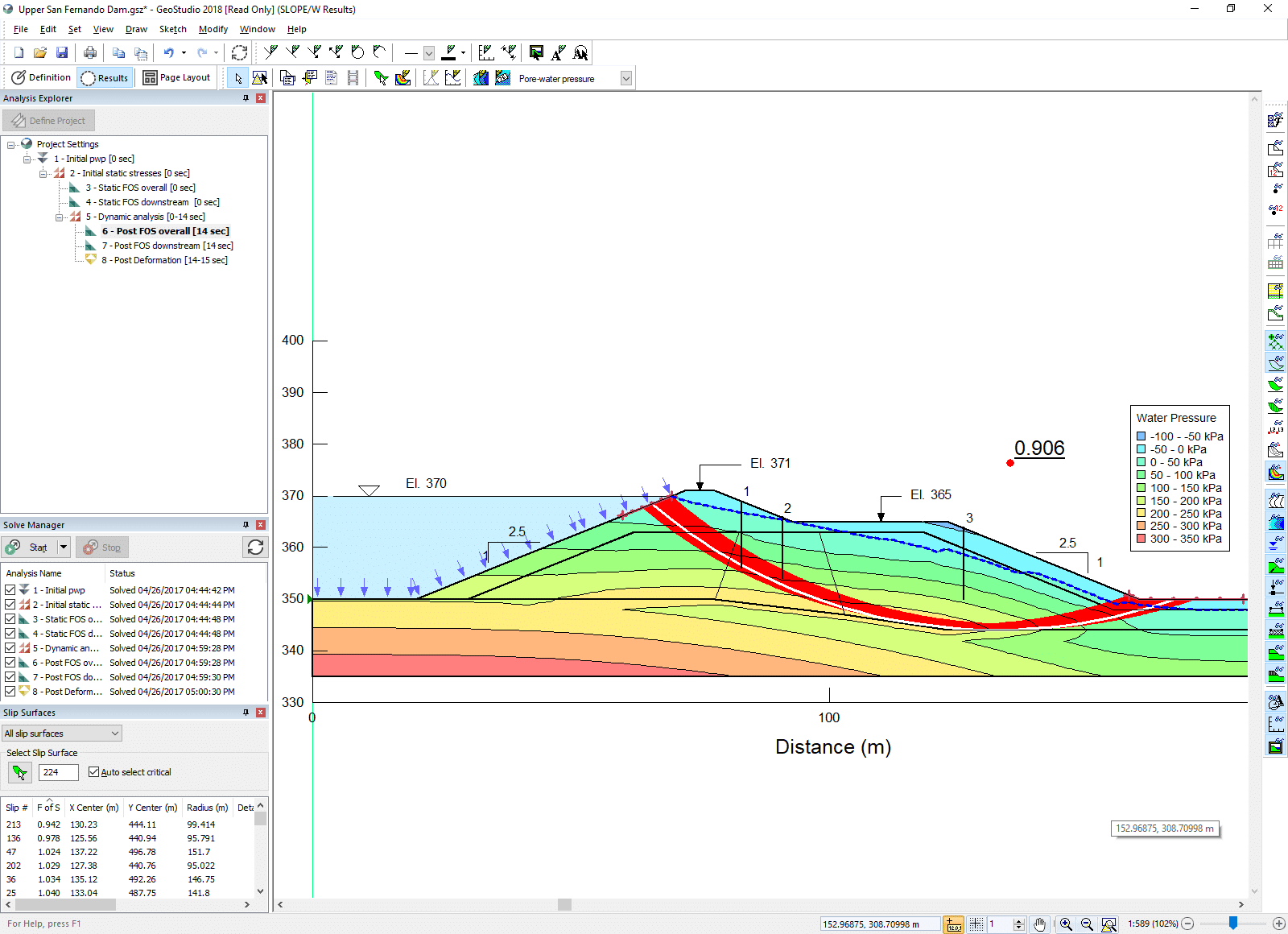
6.
Model deformation and structure stability with SIGMA/W
Use SIGMA/W to redistribute the stresses generated by the earthquake in QUAKE/W, revealing the settlement that will occur in the earth structure. Use the final stresses and pore-water pressures in SLOPE/W to analyze stability at the end of shaking.





